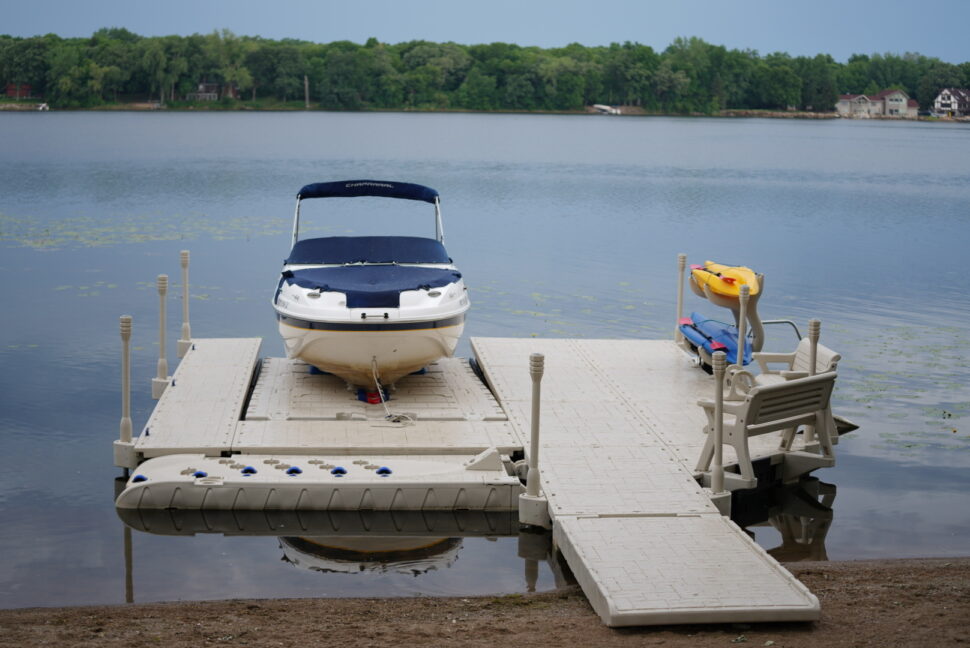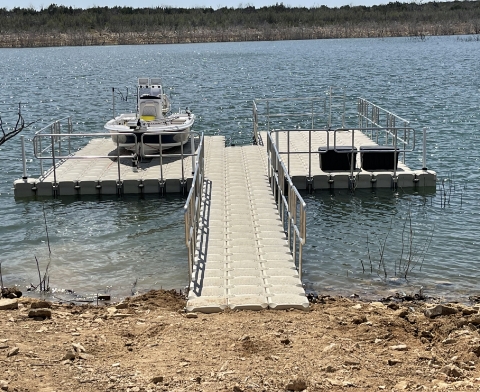The Ultimate Guide to Picking the very best Floating Docks
Selecting the perfect floating dock requires an extensive understanding of numerous elements that affect both efficiency and long life. Aspects such as dock types, products, and crucial features dramatically influence your decision-making process.
Comprehending Floating Dock Types
When selecting a floating dock, it is important to recognize the different types available, as each offers distinctive objectives and applications. Floating docks primarily fall right into 3 groups: modular, stationary, and pontoon docks.
Modular docks are composed of individual areas that can be conveniently constructed or reconfigured, making them ideal for altering water levels and varied usages, such as recreational tasks or industrial procedures. Their versatility enables for customization based upon details requirements.

Pontoon docks are defined by their buoyant framework, frequently composed of numerous pontoons that give security and support. They are especially fit for larger vessels and are generally utilized in marinas or for waterfront residential properties. Recognizing these types aids in selecting the most appropriate floating dock to fulfill certain needs, ensuring optimum capability and safety.
Key Products for Sturdiness
Picking the right products for floating docks significantly effects their resilience and long life. The most typical materials consist of wood, plastic, steel, and composite products, each offering distinctive benefits and restrictions.
Timber, usually preferred for its aesthetic appeal, calls for routine upkeep to withstand wetness and degeneration. Pressure-treated lumber can improve resistance to rot, but it may still be at risk to pests and weathering.

Plastic docks, constructed from high-density polyethylene (HDPE), are resistant to deterioration, UV radiation, and impact, making them a preferred option for seaside settings. Their light-weight nature additionally facilitates simple setup and moving.
Metal docks, generally constructed from light weight aluminum or galvanized steel, provide extraordinary stamina and resilience. They are resistant to rust, particularly when treated, however might call for extra insulation to stop heat buildup in hot environments.
Composite materials, incorporating wood fibers and plastics, provide the advantages of both timber and plastic, standing up to moisture and fading while needing very little upkeep. - floating dock services
Eventually, the option of materials must align with environmental conditions, intended usage, and upkeep preferences to guarantee the floating dock remains functional and cosmetically pleasing gradually.
Necessary Features to Think About
While the choice of materials is critical, taking into consideration important functions for floating docks is just as essential to make certain ideal efficiency and individual satisfaction. One key feature to analyze is the dock's buoyancy capacity, which figures out just how much weight it can sustain without immersing. floating dock company. This is important for suiting watercrafts, personal watercraft, and even recreational activities
Furthermore, portability is a considerable consideration. Depending on your needs, you might desire a dock that is simple to carry and disassemble, particularly if you prepare to move it seasonally. Security is another crucial function; a properly designed floating dock must minimize movement caused by wind and water currents, supplying a safe and secure platform for customers.
Security features, such as non-slip surface areas and rounded edges, additional info are also vital to stop accidents, specifically in wet conditions. Think about the schedule of accessories, such as cleats, bumpers, and ladders, which can boost the functionality of your dock.
Setup and Upkeep Tips
Establishing and maintaining a drifting dock calls for mindful planning and interest to detail to ensure its longevity and optimum performance. Begin by selecting a suitable location that lessens exposure to strong currents and waves, which can create wear and tear. Make sure that the water deepness suffices for the dock's elevation and that it is secured securely to avoid activity.
During installment, comply with the supplier's standards closely, as inappropriate assembly can YOURURL.com endanger stability. Usage premium products immune to corrosion, such as aluminum or dealt with wood, to enhance sturdiness. Regularly check all elements, including drifts, connectors, and securing systems, for signs of damage or wear.
If your dock uses flotation devices, ensure they continue to be intact and free from leaks. By adhering to these installation and maintenance tips, you can enjoy a functional and trustworthy floating dock for years to come.
Budgeting for Your Dock
Budgeting for your dock is an important action that can substantially affect your overall complete satisfaction and financial investment in a waterside property. Developing a clear budget plan aids you browse the various alternatives available and ensures you make educated decisions that line up with your financial capacities.
Begin by establishing the dimension and style of the dock you call for, as these elements will substantially influence the price. Floating docks can differ substantially in cost, depending upon materials, buoyancy, and features like accessories and ramps. Research study various suppliers and suppliers to contrast prices and recognize the market value.
Along with preliminary expenses, think about continuous costs such as maintenance, insurance, and potential repair work. Assign funds for these persisting expenses to avoid shocks down the line. It's additionally prudent to allocate any needed licenses or evaluations, which may be called for by regional regulations.
Finally, remember the possible roi. A tactical dock can improve your property's value and allure, giving a favorable financial impact in the lengthy term. By budgeting successfully, you can ensure that your dock satisfies your requirements without jeopardizing your monetary security.
Conclusion
In conclusion, picking the suitable floating dock necessitates a detailed evaluation of different factors, including dock types, materials, necessary features, and installment procedures. Cautious consideration of financial restraints will better make sure a sound financial investment.

While the selection of products is crucial, taking into consideration important functions for floating docks is equally crucial to make sure ideal performance and customer contentment.Establishing up and preserving a floating dock requires careful preparation and interest Get the facts to information to ensure its longevity and optimum efficiency. Floating docks can vary substantially in cost, depending on products, buoyancy, and functions like accessories and ramps.In verdict, choosing the excellent floating dock necessitates a comprehensive assessment of numerous factors, consisting of dock types, materials, necessary functions, and installment processes.